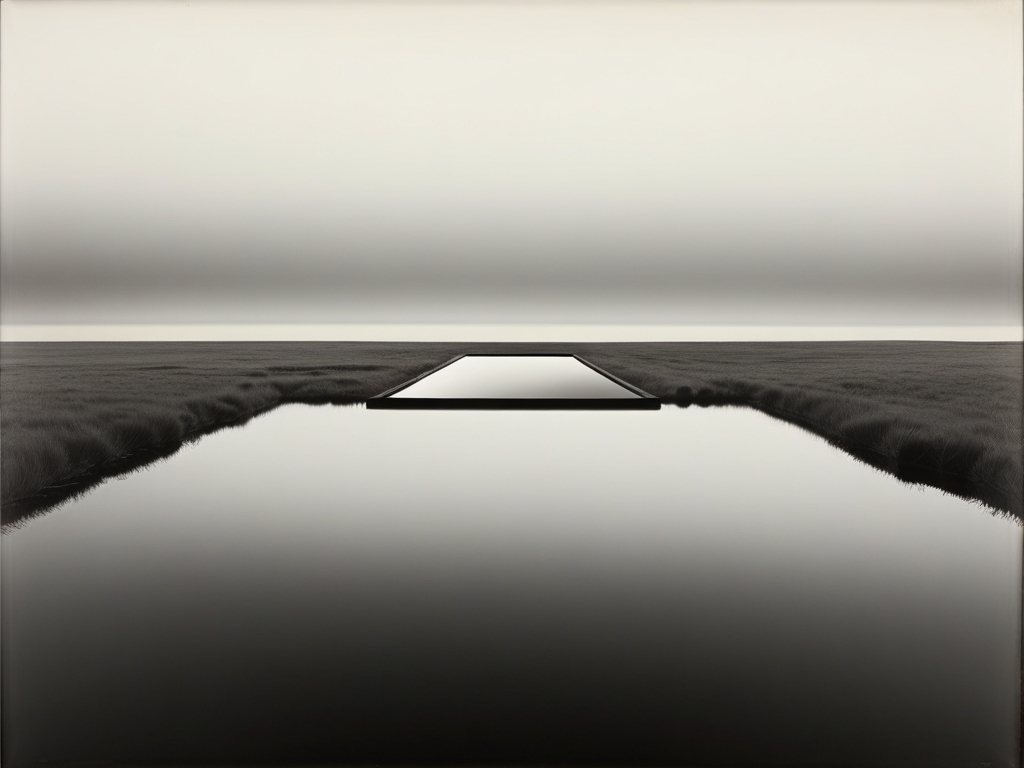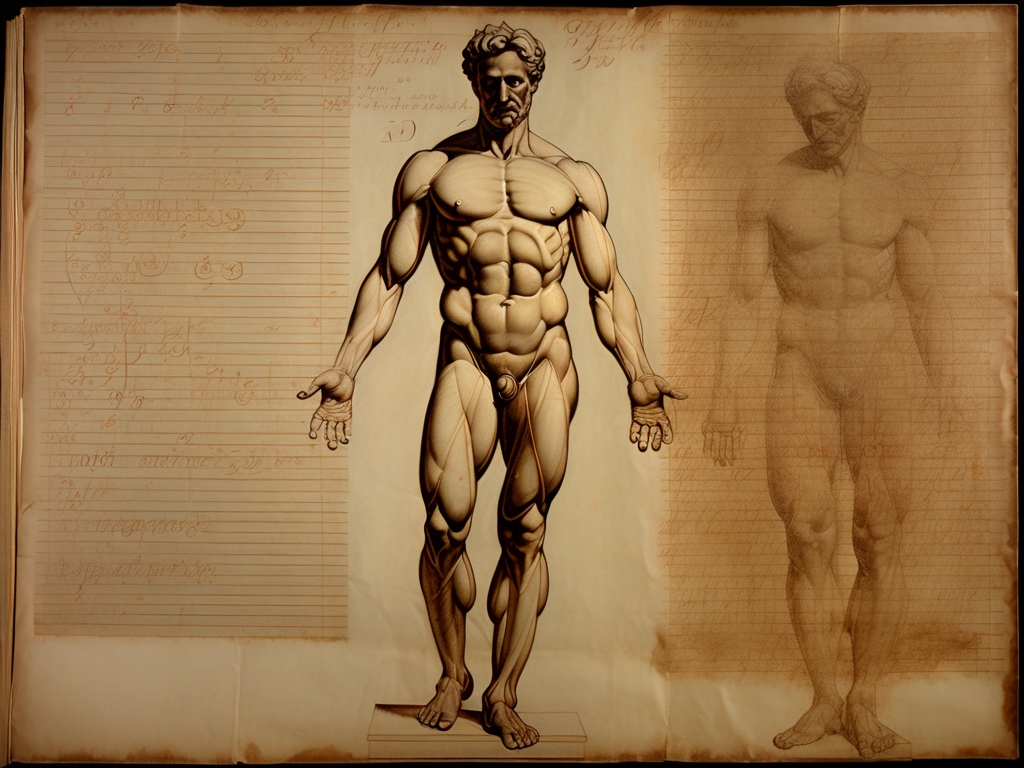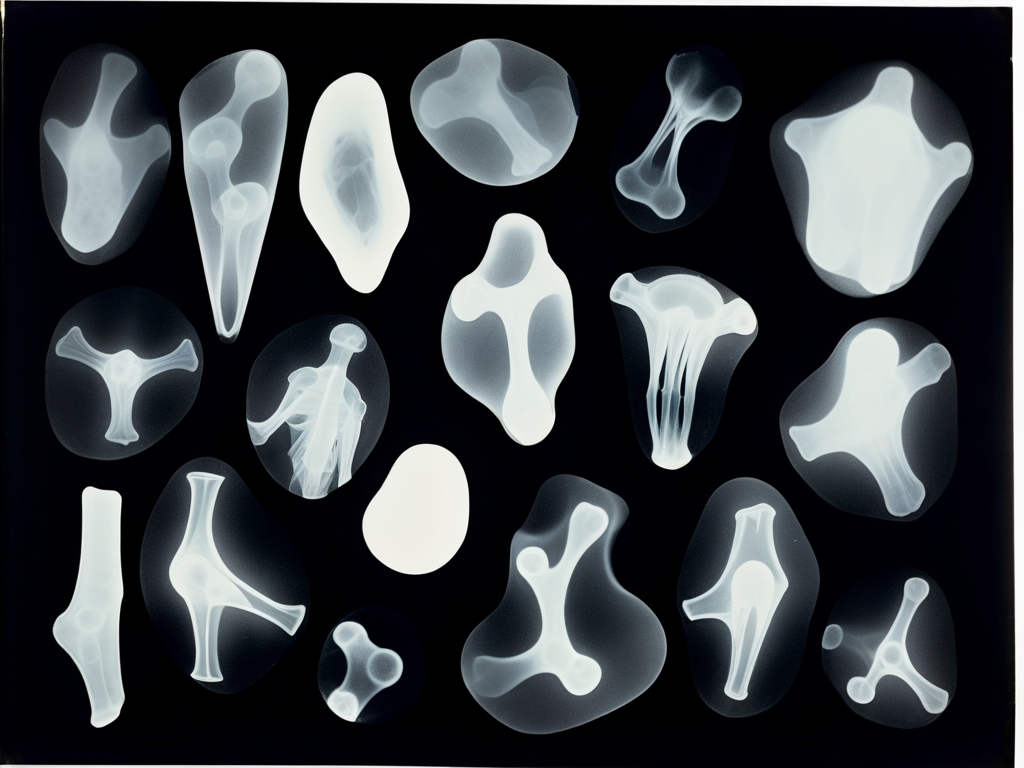The Erasure Landscape

The photograph resides in the eastern wing of Ravensfield, its burnished surface gleaming like polished obsidian under the soft gallery light. Visitors find themselves drawn before this deceptively simple landscape: a low horizon dividing an empty plain beneath an unbroken, overcast sky. A narrow channel of still water threads through the barren grasses, reflecting the muted light with mirror-like precision. Yet there is something unsettling in its stark geometry and tranquil reflection that compels extended contemplation—as if beneath its serene facade lie depths beyond ordinary perception.
What sets this gelatin silver print apart from countless others within the realm of Straight Photography is its unusual luminosity. Through a meticulous burnishing technique, the water’s surface appears almost glassy within the frame, inviting viewers to glimpse their own faint reflections subtly layered atop the desolate terrain. The effect is profoundly uncanny—suggesting a liminal space where this landscape exists simultaneously in our world and some place infinitely more remote.
In 1927, investigative journalist Thaddeus Grimm encountered precisely this scene while chronicling land disputes across Nebraska’s sandhills. His mission seemed straightforward: interview homesteaders, capture photographs of contested boundaries, and file his report. Grimm was known for his remarkable eye for detail—a skill honed over three decades of reportage.
That morning, as Grimm positioned his camera beside the slender waterway to record what appeared little more than placid grassland flanked by an undisturbed canal, an otherworldly shimmer crept into his viewfinder’s horizon line. The gray sky seemed to breathe softly above swaying grasses that moved without sound or stir.
With each adjustment of focus came an unsettling erosion of memory. Childhood recollections—his mother’s bread baking, his father’s voice—faded first; then professional milestones slipped away—the familiar faces behind bylines and awards dissolving into shadowed forgetfulness. Each click of his shutter claimed another fragment of selfhood.
By midday Grimm no longer remembered his own name. He stood at the water’s edge—still waters perfectly reflecting both sky and grass—in stilled silence gazing through a viewfinder framing impossible lightfolds where reality bent inward upon itself. The landscape pulsed with cosmic significance beyond human grasp—vast intelligences flowing through dimensions intersecting briefly with this forsaken plain.
The final exposure captured not mere terrain and sky but woven geometric patterns sculpted by unseen forces reshaping existence like ripples beneath placid waters and fractured horizons.
Three days later Grimm was found catatonic at that same canal side clutching his camera as though warding off invisible intrusions.
In those lost moments before oblivion grimly took hold, he glimpsed a revelation denied memory thereafter: humanity’s frailty before immense cosmic machinery so vast consciousness flickered only briefly—a transient dance of light cast toward eternal dissolution into boundless patterns beyond naming or knowing.
This photograph entered Ravensfield’s collection thanks to Cornelius Ashworth Blackwood who acquired it posthumously from Nebraska State Hospital following Grimm’s passing in 1934. Blackwood recognized immediately it transcended documentation—emerging instead as proof of thin places where ineffable forces pressed relentlessly against fragile human reality.
Modern visitors speak quietly yet insistently about strange aftereffects: fleeting amnesias echoing fading memories reflected on tranquil surfaces; dreams suffused with endless horizons; persistent feelings of watchful presences inhabiting spaces between thought—drawn inexplicably toward smooth canals slicing through deserted plains beneath featureless skies.
Patient and inexorable, this image continues its work offering fragments glimpsed too deeply—a truth no mind was crafted to contain—all mirrored silently back from glossy depths where earth merges with void along still corridors vanishing into indistinct horizons.
"It photographs the unphotographable—the moment when cosmic indifference becomes visible." Dr. Isadora Tench, Xenophenomenologist




